Welcome to what I hope is a leaner and meaner ESPatch website.

I have reduced the size, consolidated the sidebar and tried everything I could to speed up the load time (including waxing and greasing the inter-webs, naturally).
Tell me you no longer have time, while it is loading, to make an entire cup of tea…Annie?
Now, onto those brains:

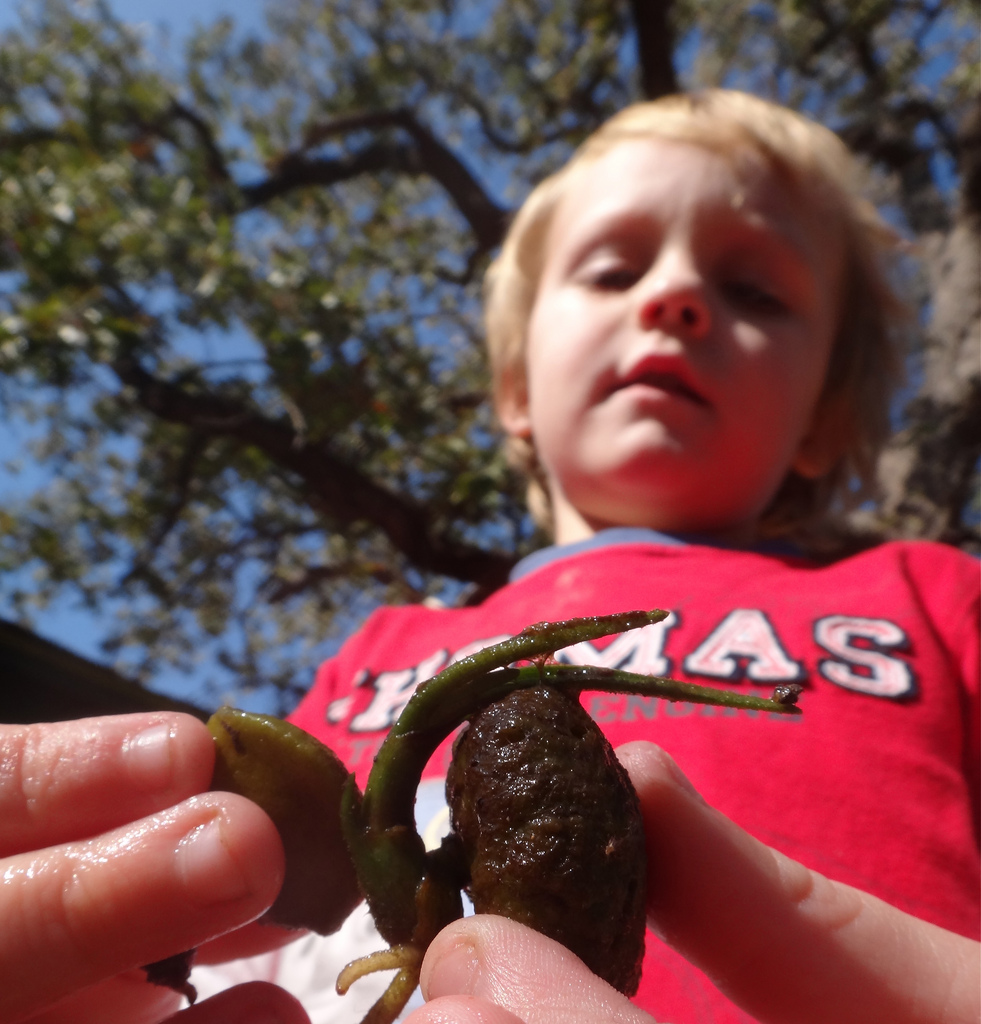
I am happy to announce that I finally have closure to the “floating brain” anomalies that have been showing up in my pond for countless years.

“Aye, since I was a whipper snapper those brain anomalies have been showing up in his pond.”
And this is it in a word:
“Viviparous”
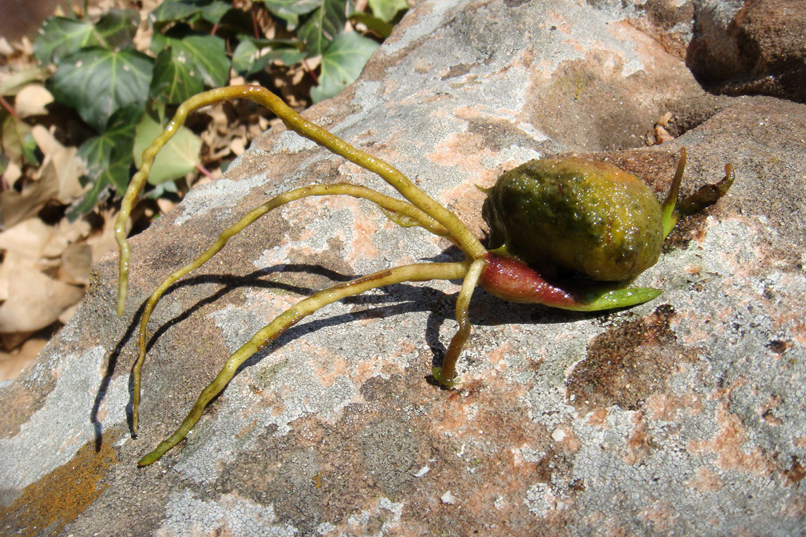
A reader who was conducting research on waterlilies kept coming across this word and subsequently searched it on Google and low and behold my “floating brain” mystery was solved…thanks for solving this brain teasing puzzle Max P, and for informing me.

Here is the definition of being viviparous:
1. Producing living young instead of eggs from within the body in the manner of nearly all mammals, many reptiles, and a few fishes.
2. Germinating while still attached to the parent plant (or) producing plantlets.
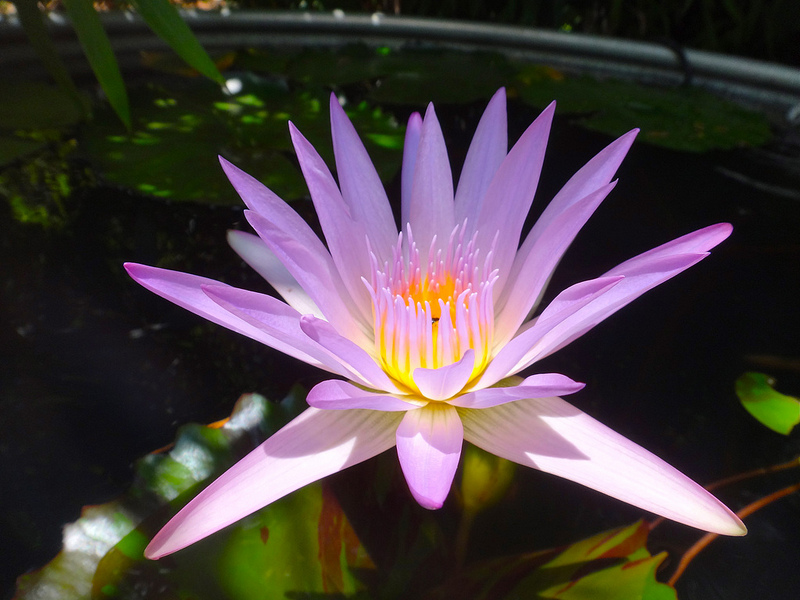
It turns out that my Madam Ganna Walska tropical water lily happens to be one on the list of the most popular viviparous tropical lilies on the market today.
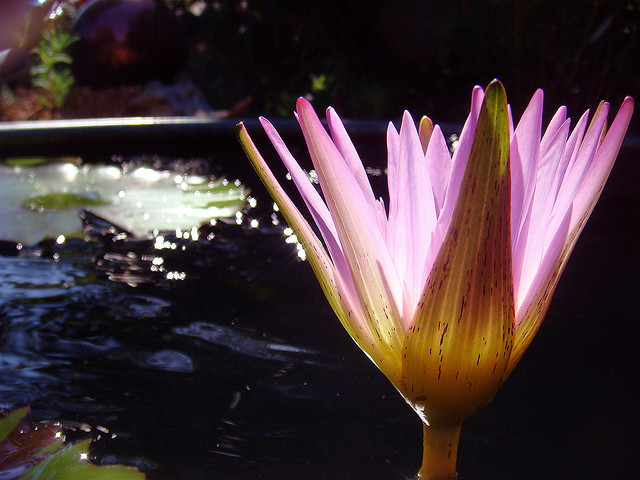
The brains start life as gelatinous looking growths in the center of a lily pads. The brain grows until the original lily pad decays and completely disintegrates, leaving only a floating ‘brain’.

Ack, ack, ack, ack!
The brain eventually gets large enough and heavy enough to sink to the bottom of the pond where it can take root and start growing in the organic sludge…ingenious.
Talking about things that look like other things.
Here is another rather strange video from the director (ahem) that gave you the internationally (ahem) acclaimed short: “Looks Like..1”
Moving along:
You can wipe your butt with its soft fuzzy leaves.
You can make a medicinal tea out of it to treat coughs, sore throats and bronchitis.
You can even extract oil from the plant’s flowers to relieve pain from earaches and infections, hemorrhoids, inflammations, rashes, sunburns, and bruises.
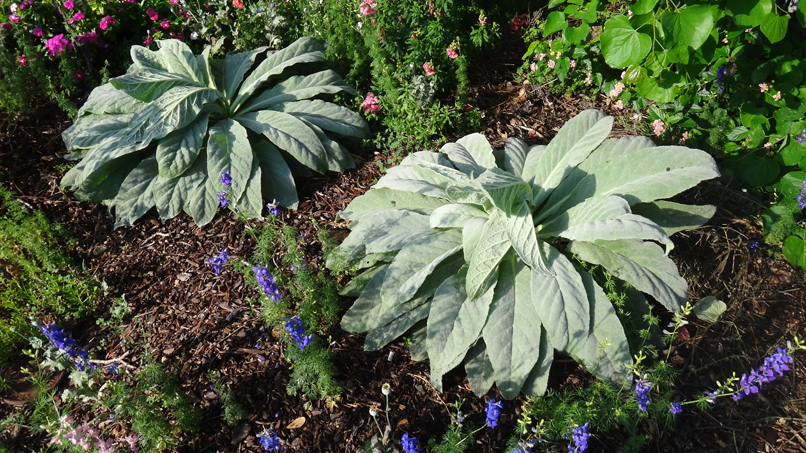
Mullein,
Verbascum thapsus L.
also called Wooly Mullein, Velvet-leaf, Flannel-leaf, Jacob’s Staff and Quaker Rouge, a most versatile plant indeed.
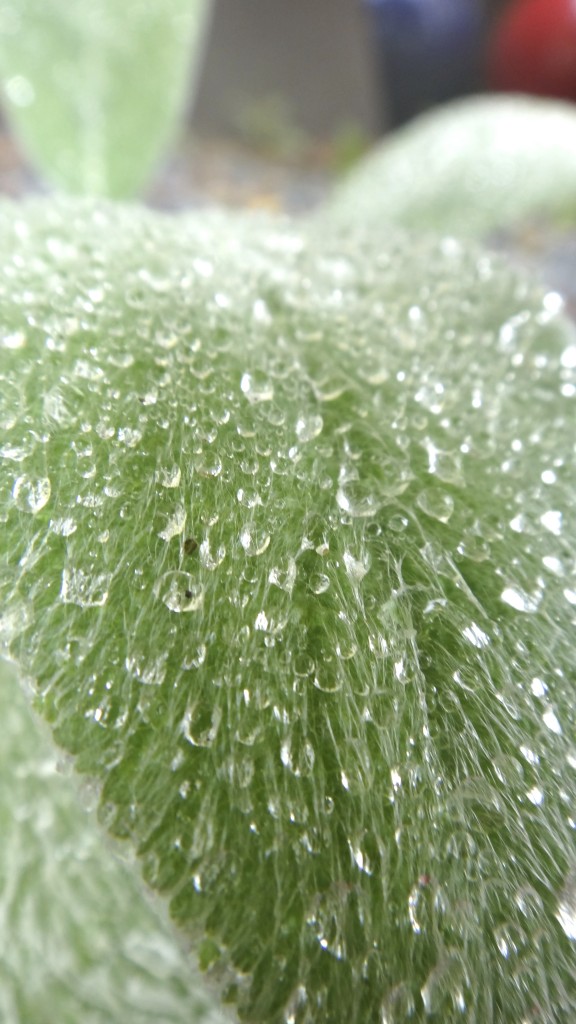
Pick it after a heavy dew to achieve that extra ‘fresh’ feeling…
What?!
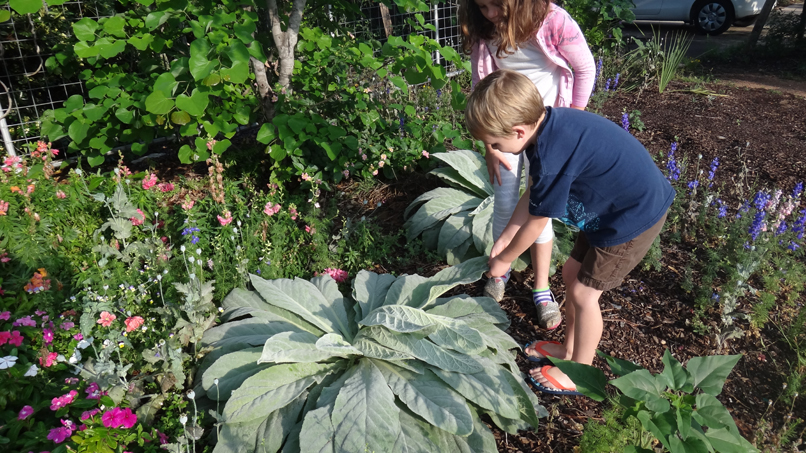
The plant is often called “cowboy toilet paper,”
 but beware, overuse of the plant externally can irritate the skin and if you harvest the plant from the roadside there is always the risk of pollutants, and you most certainly do not want any of those anywhere…
but beware, overuse of the plant externally can irritate the skin and if you harvest the plant from the roadside there is always the risk of pollutants, and you most certainly do not want any of those anywhere…

down there.

Quakers were not allowed to use makeup way back when, but rubbing wooly mullein leaves on their cheeks (facial) resulted in a desirable ruby blush…hence “Quaker Rouge.”
Finally:
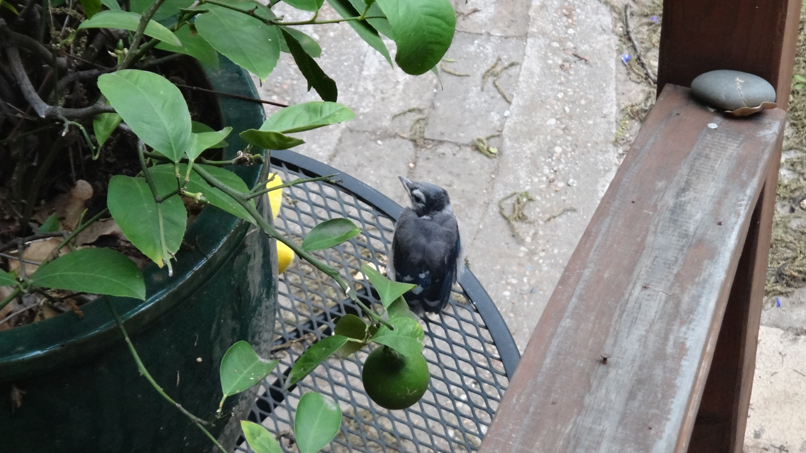
I found this fledgling Blue Jay huddled against my back deck, its mother was up in an adjacent pecan tree beckoning to it.
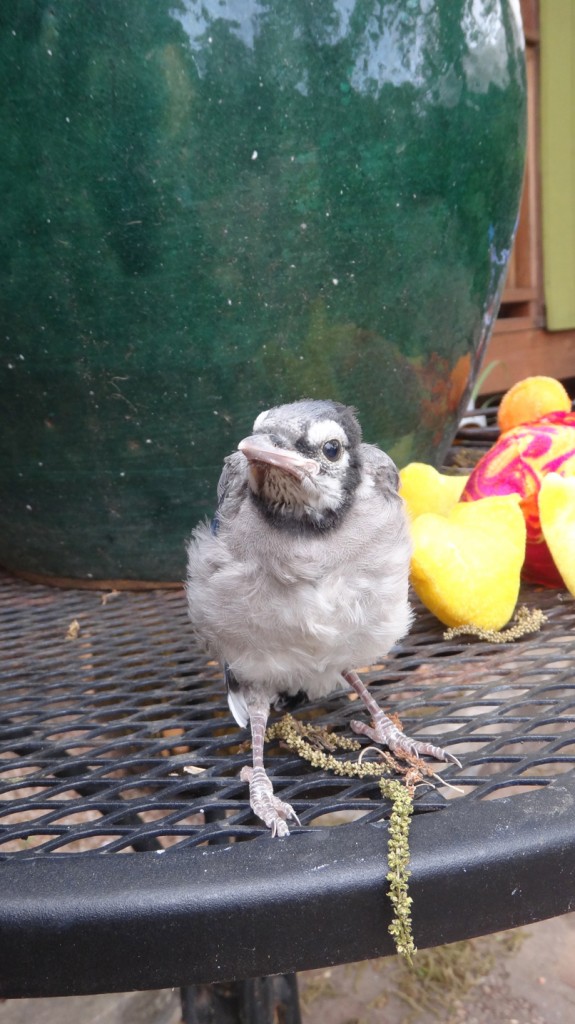
It was not at all afraid of me as I took a couple of pictures, I took this one a few inches away from it, just before it let out the most unearthly scream…so much volume for such a small bird. Then it blundered to the relative safety and cover of my Hoja Santa plants.

Luckily for it, this current cold snap has all the local cats hunkered down in much warmer places…

…Fly Mr Blue Jay…Fly.
Stay Tuned for:
“Pick, Pick, Picking”
All material © 2013 for eastsidepatch. Unauthorized
intergalactic reproduction strictly prohibited, and
punishable by late (and extremely unpleasant)
14th century planet Earth techniques.
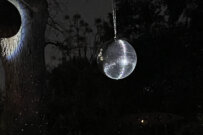

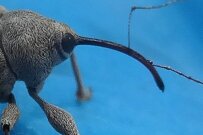

























































Comments on this entry are closed.
Happy to help! It is kind of sad though, one less mystery, but luckily for us, gardens are full of mysteries, some of which are better left unsolved (thinking of a few gelatinous blobs in my own garden). Also, thanks for the info on the verbascum, but, I think I’ll stick to the conventional stuff…
Hi Max, appreciate your help and ID on this one!
I agree though, the unsolved mysteries are what makes gardening and nature so much fun, I have a few more new ones to solve myself this spring :-)
Yes, better to play it safe and avoid the risk of any monoxide complications…down there…Yikes!
Brilliant all ’round.
Thanks Gail.
I hope the site is working faster for you.
Your site loaded pretty fast, ESP! So waterlilies can be viviparous, too? I knew both Mother of Thousands/Kalanchoe daigremontiana/Bryophyllum daigremontianum and Donkey Ears/Kalanchoe gastonis-bonnieri are viviparous but the offspring look like little baby plants instead of something from a science fiction movie. How cool that Max could ID them for you! If either of you want plantlets of MoT, let me know.
The mullein is tempting… used to grow some cultivated garden varieties in Illinois but not here in TX. II was probably about as old as your daughter when I first read the word Mullein. Demi & Dan talk about its uses as a medicine plant in Louisa May Alcott’s “Little Men”. Also this:
“I know one thing about this mullein leaf: the fairies use them for blankets,” said Demi.
Annie at the Transplantable Rose
Hi Annie, glad the site loaded a little more efficiently for you.
Yes there are a lot of viviparous tropical water lilies as I found out researching this post. I had MoT for a while but it went crazy in one of my beds so I started to pull out all the tiny pups…I think it took me about a year :-)
Mullein has lots of stories and history surrounding it. Its medical use dates back to the ancient Greek times. The first record of its use was as treatment for breathing problems prescribed by the Greek physician Dioscorides.
It would make a great fairy blanket, but I fear if I mention this to my daughter, I will find small bedroom installations dotted all around the Patch…shhh.
The video will work now, thanks for letting me know.
ESP.
PS Tried to watch the Looks Like but screen was gray with “This Video Is Private”.
Those mullein are MASSIVE. I planted three this spring in my new front garden, but egad, I didn’t know they’d reach that size. Or are yours on Patch steroids?
Hi Pam.
Yes, there are enough leaves to keep us in bog-roll until the fall. The leaves are so large though, they have difficulty getting around the u-bend :-)
After reading this yesterday I ran across a baby jay on my own front porch (and blogged about it – linked to you, natch). Lots of launching going on these days I suppose.
Hi TD.
Thanks for the link, I guess it is that time of year.
That little bird screamed so loud in my face…
I had a few wild mullein pop up in a very protected spot, but I haven’t seen if they survived the last year! I hope so, since I don’t wanna chap Clint’s hide…
Your blog loads much faster, thank you. The way you had it set up did make things tough for my PC, running AutoCAD and 3 other applications, then I open a 5th browser tab for ESP.
Appreciate the feedback David, and happy it loads faster for you. It was getting so slow even search engines would fall asleep mid-crawl.
You want softness.
You want freshness.
You want…
Mullein.
Now that was fast. Kidding, I couldn’t tell any diffrence. It’s always loads fast for me.
Dangit, I just knew those brains were what was left of the little tribe after shrinking a few heads. I liked my theory better than the facts.
You forgot to mention the smoking of the mullein. My Grandmother used to smoke it for her ashma. Probably what gave it to her to begin with, crazy old broad.
Hi Bob…it has to be a little faster!
I was so obsessed with the mullein as TP that I forgot to mention the smoking of the mullein :-) The plant has been used for so many things through the centuries, it is hard to keep up.
I secretly think that Max P. may be one of the little tribes-folk who has access to a tiny computer. Viviparous? Perhaps he introduced this to throw us all off what is really happening down in the far reaches of the Patch…you know, cannibalism, shrinking heads then extracting / worshiping the brains etc, etc.
(Hannibal noises here)